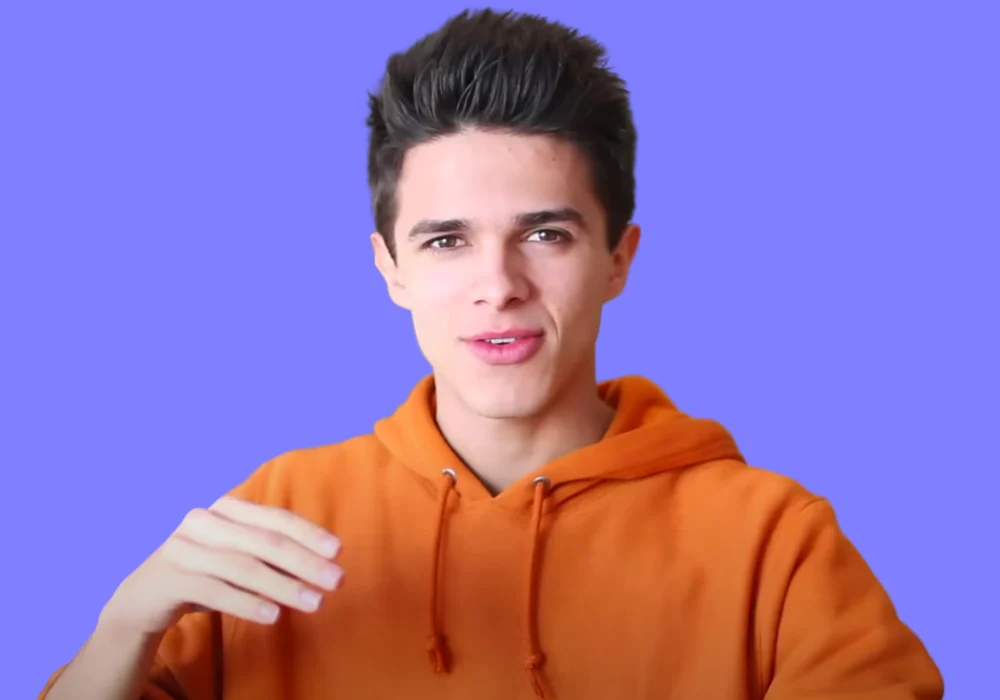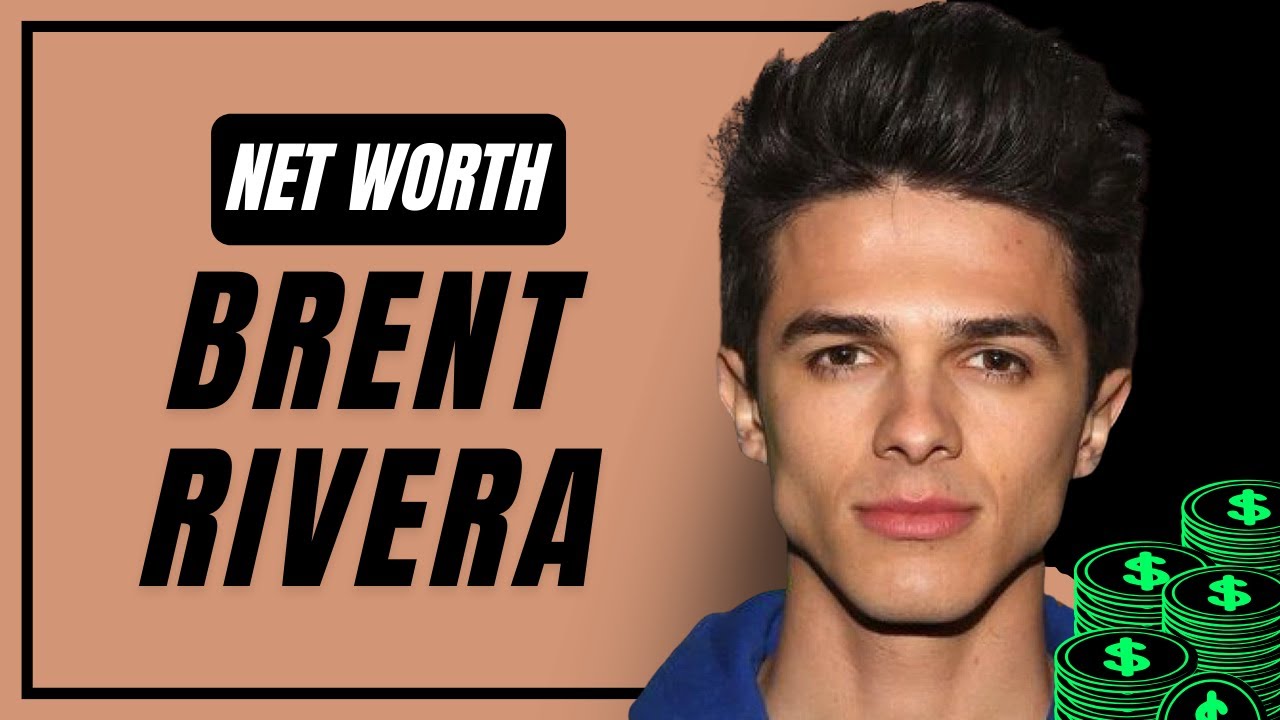Brent Rivera and the “Creator Economy” Empire: Beyond the Views — an Economic Profile
The phenomenon of Brent Rivera as a creator extends well beyond simple view counts. In discussing
Brent Rivera and the “Creator Economy” Empire: Beyond the Views, we examine how a digital personality
builds an economic ecosystem: diversified revenue streams, brand equity, intellectual property, staffing and
operational costs, and balance-sheet implications. This profile analyzes a creator-driven enterprise from an economic
standpoint, using industry averages, estimated metrics and public-facing indicators to frame the analysis of
Brent Riveras creator-economy empire.
From Views to Value: The Shift in Creator Monetization
Historically, creators monetized primarily through advertising. Today, the notion of the “Creator Economy Empire”
emphasizes that value is generated across many channels. For Brent Rivera, the transformation from high-volume views to
enterprise-grade revenue means leveraging:
- Branded sponsorships and influencer marketing
- Merchandise and direct-to-fan sales
- Content licensing and IP (shows, characters, music)
- Platform revenue shares (YouTube, TikTok, Snapchat)
- Equity stakes in startups and creator networks
Economic logic behind diversification
Diversification reduces exposure to platform-specific shocks. When a creator like Brent Rivera builds a
multi-vertical revenue model, the business lowers volatility, increases liquidity options, and creates
long-term value that can be capitalized through licensing, partnerships, or sale.
Quantifying the Empire: Audience, Reach, and Revenue Estimates
Quantifying a creator enterprise requires triangulation: publicly visible counts (followers, views), reported CPMs,
sponsorship disclosures, and observed commercial activity (touring, merch drops). The numbers below are illustrative
estimates for a top-tier creator with multi-platform presence. They should be read as indicative rather than definitive.
| Metric | Example Value | Notes / Basis |
|---|---|---|
| Total combined followers | 60–120 million | Aggregate across YouTube, TikTok, Instagram, Snapchat (public counts) |
| Annual views (all platforms) | 1.0–4.0 billion | Seasonal variation; viral events increase range |
| Ad revenue (YouTube CPM/net) | $2–$8 per 1,000 views | Net to creator after platform cuts; market-dependent |
| Sponsorships / brand deals (annual) | $2–$8 million | Depends on number of deals and exclusivity |
| Merchandise & D2C sales | $0.5–$3 million | Margins vary; includes fulfillment costs |
| Estimated total annual revenue | $5–$15 million | Conservative-to-aggressive industry estimate for top creators |
For a creator operating at Brent Riveras scale, these numbers are consistent with the broader cohort of influencers
who have translated audience scale into stable revenue. Note that revenue ranges vary widely by geography, audience
demographics and the types of content produced.
Revenue Streams: A Deeper Breakdown
Sponsorships and Brand Partnerships
Sponsorship deals are often the largest single revenue line for high-reach creators. This stream has several economic
characteristics:
- High-margin (creative work often has low incremental cost)
- Negotiated pricing, often tied to engagement metrics rather than raw views
- Can include performance bonuses, affiliate revenue, and exclusivity premiums
Platform Revenues and Creator Monetization
Platform-based income (ads, revenue share, tipping, subscriptions) is more volatile and often lower margin relative to
brand deals, but it is essential for discoverability and base monetization. Key considerations:
- CPMs differ by platform: YouTube higher on long-form content, TikTok lower on short clips historically
- Revenue share models are evolving — tipping and subscription features create more direct fan monetization
- Platform algorithmic changes create systemic risks for creators dependent on organic reach
Costs and Investment: Running a Creator Enterprise
Treating a creator like Brent Rivera as an economic firm reveals recurring costs and capital needs that are often hidden
behind the perception of “solo” content creation. Major cost categories include:
- Talent and payroll — content teams, managers, legal and finance staff
- Production — equipment, locations, travel
- Marketing — paid promotion, PR, cross-platform seeding
- Merch and fulfillment — inventory, shipping, returns
- IP protection and legal — trademarking, contracts
A mid-size creator business operating at the multi-million revenue range might allocate anywhere from 15% to 40%
of revenues to operating expenses depending on growth strategy and vertical mix.
Example Cost Structure (Illustrative)
| Cost Category | % of Revenue (Illustrative) |
|---|---|
| Payroll & talent | 10–20% |
| Production & travel | 5–15% |
| Merch COGS & fulfillment | 10–25% |
| Marketing & paid distribution | 5–10% |
| Legal & administrative | 3–7% |
Valuation and Long-Term Assetization
The key to converting ephemeral engagement into long-term economic value is assetization. This process
implies turning reputation, audience, formats, and IP into tangible assets that generate predictable cash flows. For a
high-profile creator empire like Brent Riveras, assetization pathways include:
- Merchandise brands with recurring sales and licensing deals
- Production IP — scripted series, character IP that can be licensed to third parties
- Equity stakes in media or technology platforms that align with audience interests
- Content libraries that continue to monetize via syndication
When investors evaluate a creator business, they look for predictability: recurring revenue, diversified income, margins,
and ownership of IP. A creator with strong branding and team infrastructure can be valued using a multiple of EBITDA or
revenue, analogous to small media companies. Multiples vary widely; deals in the creator economy have shown revenue
multiples from 1x to 5x depending on growth and defensibility.
Labor Economics: The Creator Team and Human Capital
The human capital behind a creator empire is often decentralized but increasingly professionalized. The labor market for
creators and their teams has several characteristics:
- High variance in productivity — a small team can produce disproportionate returns
- Skills premium for platform-native production expertise (short-form editing, community management)
- Turnover risks as talent seeks independent deals or moves to competing networks
Staffing as a scaling lever
Investment in a stable production and business team enables a creator to scale output, pursue partnerships, and pursue
larger commercial opportunities such as TV deals or product lines. The challenge is balancing fixed payroll with
revenue seasonality.
Risks: Platform Concentration, Regulation, and Brand Fragility
Creator businesses are exposed to several systemic risks:
- Platform algorithm changes can reduce reach overnight
- Regulatory risk — FTC enforcement on disclosures, data privacy rules affecting ad targeting
- Reputational risk — a single controversy can depress sponsorship income
- Supply-chain risks — merchandise production delays, shipping cost spikes
Risk mitigation typically involves cross-platform distribution, legal compliance functions, and financial reserves. Strong
creator businesses also seek partial de-risking through licensing and equity partnerships that provide alternative income.
Macroeconomic and Industry Benchmarks
The creator economy is sensitive to broader advertising spend trends and consumer sentiment. Economic downturns often see
a cut in ad budgets, squeezing CPMs and reducing sponsorship spend. Conversely, periods of strong consumer spending can
expand brand activation budgets and direct-to-consumer demand for merch and experiences.
| Indicator | Typical Range / Trend | Implication for Creators |
|---|---|---|
| Digital ad spend growth | +5% to +15% annually (varies) | Supports sponsorship availability and CPMs |
| Average CPM (YouTube) | $2–$12 per 1,000 views | Higher for niche/commerce-oriented audiences |
| Creator economy funding | Deal activity fluctuates (mature market) | Access to capital for creator-founded startups |
Strategic Playbook: How Brent Rivera and Similar Creators Build an Empire
A repeatable strategic playbook for building a creator-economy empire includes:
- Audience-first product design — building products and experiences rooted in fan preferences
- Cross-platform content strategy to hedge algorithmic concentration
- Vertical integration — owning merch, fulfillment, and IP rights where possible
- Professionalizing operations with finance, legal and HR functions to support scale
- Leveraging strategic partnerships — media companies, brands, and investors
Each of these steps converts ephemeral social attention into structured cash flows and enterprise value, which is the
essence of the “Brent Rivera and the Creator Economy Empire: Beyond the Views” thesis.
Forward-looking Considerations and Market Dynamics
Looking ahead, the most significant variables for creators building empires are platform policy, consumer demand for
creators products, and the ability to convert short-term engagement into long-term brand loyalty. Observers of
Brent Riveras creator-economy empire will watch:
- How creators monetize live and interactive formats
- Whether creators successfully license IP to traditional media
- The role of capital markets and M&A in consolidating creator businesses
These dynamics will determine capitalization rates for creator assets, the prevalence of multi-year brand deals, and the
structural sustainability of creator-led commerce. The future trajectory of a high-profile creator — whether called
Brent Rivera and the “Creator Economy” Empire: Beyond the Views or branded differently — will depend on
execution across content, commerce and corporate governance as the ecosystem continues to mature into a more formalized
industry with professional investors and institutional buyers



